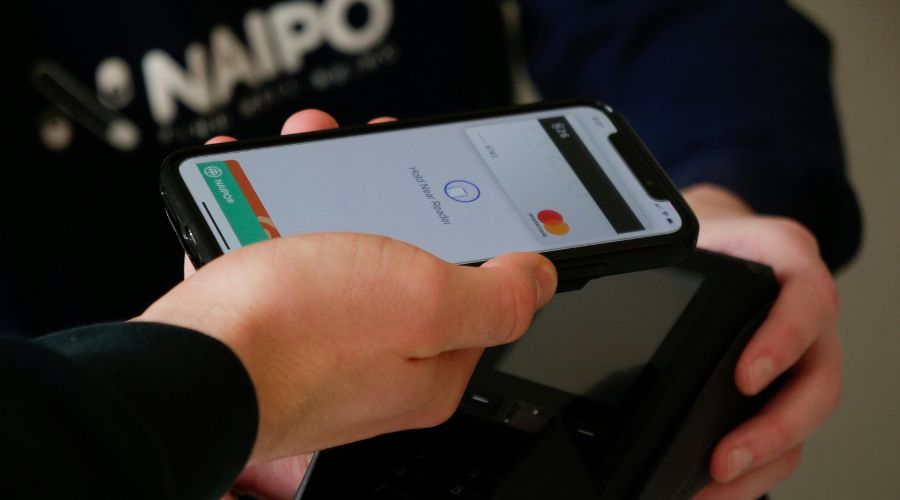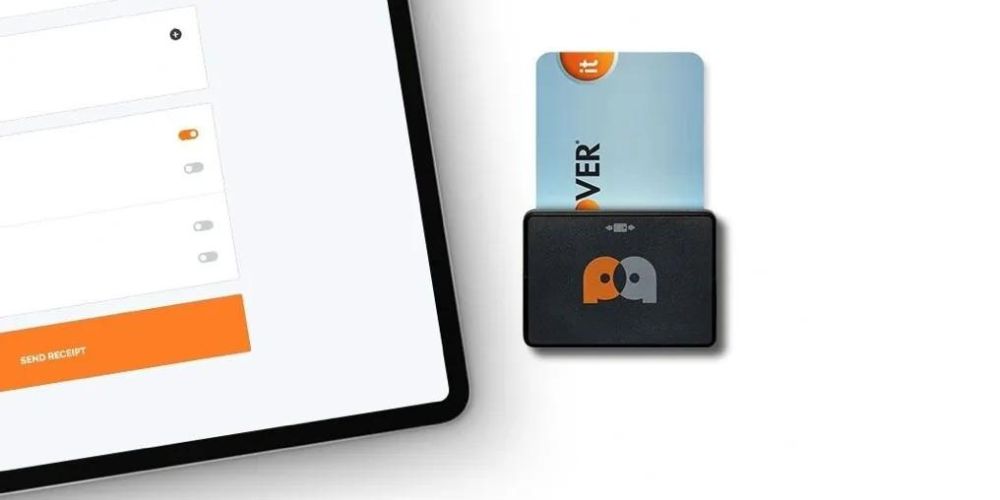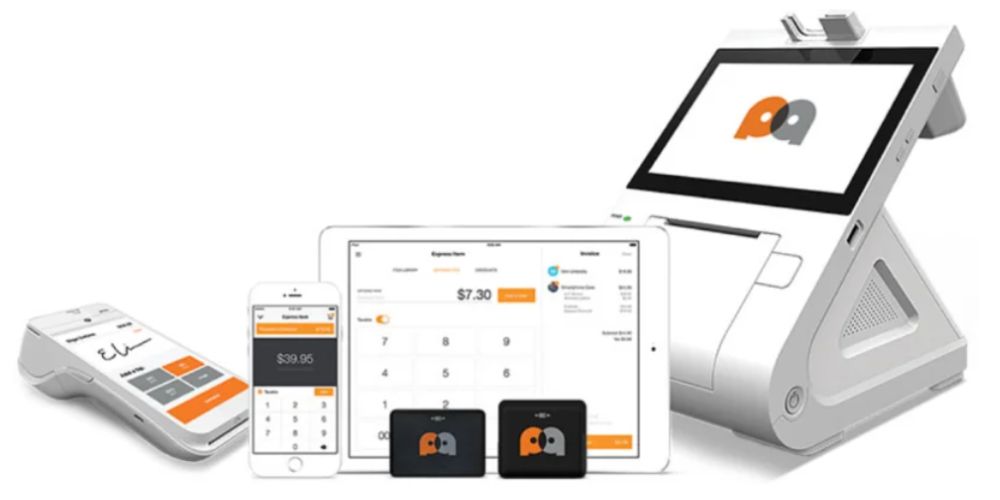Introduction
Overview of Mobile Credit Card Processing
Mobile credit card processing allows businesses to accept payments via mobile devices like smartphones and tablets. This technology has transformed the way transactions are conducted, providing flexibility and convenience for both businesses and customers. With mobile credit card processing, businesses can accept payments anywhere, whether at a store, a market, or a customer’s location.
One of the main benefits of mobile credit card processing is the ease of setup and use. By using a mobile credit card reader attached to a smartphone, businesses can process transactions quickly and securely. This technology also supports various payment methods, including credit cards, debit cards, and contactless payments like Apple Pay and Google Wallet, catering to diverse customer preferences.
Significance and Growth in the Digital Age
In today’s digital age, the ability to accept mobile payments is crucial for businesses aiming to stay competitive. The rise of e-commerce and the increasing preference for cashless transactions have driven the adoption of mobile credit card processing. This growth is reflected in the expanding market for mobile payment processors, with more companies offering innovative solutions to meet the demands of modern consumers.
The significance of mobile credit card processing extends beyond convenience. It enhances customer experience by reducing wait times and providing seamless payment options. For businesses, it means improved cash flow and access to valuable transaction data, which can be used for better decision-making and customer insights.
Evolution from Traditional to Mobile Systems
The journey from traditional credit card processing to mobile systems has been marked by significant technological advancements. Initially, businesses relied on bulky, stationary card readers connected to a phone line. These systems were limited to fixed locations and required substantial setup and maintenance. With mobile technology, businesses can now easily pay with credit card on phone, providing unparalleled convenience and flexibility.
With the advent of mobile phone credit card processing, these limitations have been overcome. Early mobile solutions involved simple card swipes on mobile devices. However, the technology has evolved rapidly, incorporating features like chip reading and contactless payments. This evolution has been driven by advancements in mobile technology, including better smartphone capabilities and improved internet connectivity.
The development of specialized apps for mobile credit card processing has further simplified the process. These apps enable businesses to manage transactions, track sales, and generate reports directly from their mobile devices. The integration of mobile merchant services with existing business systems has made it easier for small businesses to adopt this technology without significant investment.
The shift from traditional to mobile credit card processing has revolutionized the payment landscape. It offers unparalleled convenience, flexibility, and efficiency, making it an indispensable tool for modern businesses. Whether you’re a small business owner wondering how to accept credit card payments on your phone or a retailer looking to streamline your operations, mobile credit card processing provides the solutions you need.
Understanding Mobile Credit Card Processing

What is Mobile Credit Card Processing?
Mobile credit card processing is the technology that allows businesses to accept credit and debit card payments using a mobile device like a smartphone or tablet. This system typically involves a small card reader that connects to the mobile device via Bluetooth or an audio jack. Mobile credit card processing is essential for businesses that operate in various locations, such as food trucks, pop-up shops, or service-based businesses like home repairs.
Comparison with Traditional Credit Card Processing
Traditional credit card processing requires stationary hardware, such as a point-of-sale (POS) terminal connected to a phone line or the Internet. These systems are often bulky and limited to fixed locations.
In contrast, mobile credit card processing is portable, more affordable, and flexible, enabling businesses to accept payments anywhere with a mobile signal.
Core Components
Necessary Hardware: Mobile Devices and Card Readers
- Mobile Devices: Smartphones or tablets are essential for mobile credit card processing. These devices run the payment apps and connect to card readers.
- Card Readers: Small devices that read the credit or debit card information. They come in different types:
- Swipe Readers: For cards with magnetic stripes.
- Chip Readers: For EMV chip cards, which offer more security.
- Contactless Readers: For NFC-enabled cards and mobile wallets like Apple Pay and Google Wallet.
Software Requirements: Mobile Applications and Security Protocols
- Mobile Applications: These apps, provided by payment processors, facilitate the transaction process. They allow businesses to enter transaction details, process payments, and generate receipts. Examples include PayAnywhere, PayPal Here, and Clover Go.
- Security Protocols: Ensuring the security of transactions is crucial. Key protocols include:
- Encryption: Protects sensitive data during transmission.
- Tokenization: Replaces card details with a unique identifier or token.
- PCI Compliance: Standards set by the Payment Card Industry to safeguard cardholder data.
How Mobile Credit Card Processing Works?
Step-by-Step Process from Card Swipe to Fund Deposit
- Card Swipe/Insert/Contact: The customer swipes, inserts, or taps their card on the card reader.
- Data Transmission: The card reader sends the encrypted payment information to the mobile device.
- Authorization Request: The mobile device sends the payment details to the payment gateway, which forwards the request to the customer’s bank.
- Bank Approval: The customer’s bank checks the transaction details and available funds. If everything is correct, it approves the transaction and sends an authorization code back to the payment gateway.
- Transaction Completion: The payment gateway sends the approval back to the mobile device, completing the transaction. A receipt is generated for the customer.
Role of Payment Gateways and Merchant Accounts in Processing
- Payment Gateways: Act as intermediaries between the mobile device and the banks. They handle the secure transmission of payment data and ensure that the transaction is processed correctly.
- Merchant Accounts: Special bank accounts that hold funds from credit and debit card transactions. Once a transaction is approved, the funds are temporarily held in the merchant account before being deposited into the business’s regular bank account.
Mobile credit card processing simplifies payment acceptance, making it accessible and secure for businesses of all sizes. By leveraging modern technology, businesses can enhance their customer service and operational efficiency.
Setting Up Mobile Credit Card Processing

Choosing the Right Mobile Credit Card Reader
When setting up mobile credit card processing, the first step is to choose the right card reader. There are three main types of card readers: swipe, chip, and contactless. Each type of credit card machine for phones offers different features and levels of security.
Types of Readers
- Swipe Readers: These are the most basic types of card readers. They allow you to swipe cards with a magnetic stripe. While they are often the least expensive option, they offer lower security compared to other types. Swipe readers are ideal for businesses that process a low volume of transactions or operate in low-risk environments.
- Chip Readers: Also known as EMV readers, these devices read cards with embedded microchips. Chip readers provide enhanced security by encrypting the card data during transactions, making it harder for fraudsters to steal information. They are slightly more expensive than swipe readers but are worth the investment for the added security.
- Contactless Readers: These readers use Near Field Communication (NFC) technology to accept payments from contactless cards and mobile wallets like Apple Pay and Google Wallet. Customers simply tap their card or mobile device against the reader to complete the transaction. Contactless readers are the most convenient and secure option, though they tend to be the most expensive.
Factors to Consider
When choosing a card reader, consider the following factors:
- Cost: The price of card readers varies. Basic swipe readers are the cheapest, while chip and contactless readers cost more. Choose a reader that fits your budget while meeting your security needs.
- Compatibility: Ensure the card reader is compatible with your mobile device and the payment app you plan to use. Most modern readers support both iOS and Android devices, but it’s important to verify this to avoid compatibility issues.
- User Reviews: Look at reviews from other businesses to gauge the reliability and ease of use of different card readers. Feedback on setup, customer support, and overall user experience can help you make an informed decision.
Integration with Business Systems
Once you have selected the appropriate card reader, the next step is to integrate it with your business systems. This integration ensures smooth operations and better management of your sales data.
Linking Mobile Processing Systems with Existing POS and Accounting Software
Connecting your mobile credit card processing system with your existing POS and accounting software can streamline your business processes. When integrated, sales made through your mobile device are automatically recorded in your main sales system, reducing the need for manual entry and minimizing errors. This integration allows you to keep track of your transactions in real-time, providing a comprehensive view of your business performance.
- POS Integration: Most modern mobile payment systems offer compatibility with various POS systems. This means you can manage both in-store and mobile transactions from a single platform, simplifying inventory management and sales tracking.
- Accounting Software: Integrating with accounting software helps in automating financial records. Transactions are automatically logged, making it easier to monitor income, and expenses, and prepare financial statements. This automation saves time and reduces the risk of manual errors.
Customizing Mobile Apps for Inventory, Sales Tracking, and Customer Management
Many mobile credit card processing apps come with customizable features that can be tailored to your business needs. These features include inventory management, sales tracking, and customer relationship management (CRM).
- Inventory Management: With integrated inventory management, you can track stock levels in real-time. As sales are made, the system updates your inventory counts, helping you manage stock more efficiently and avoid over or understocking.
- Sales Tracking: Mobile payment apps often provide detailed sales reports, allowing you to analyze sales trends and customer buying patterns. This data is valuable for making informed business decisions and identifying growth opportunities.
- Customer Management: Some mobile payment apps include CRM features that allow you to collect customer information, track purchase history, and send personalized promotions or loyalty rewards. Building strong customer relationships can lead to repeat business and increased customer satisfaction.
Setting up mobile credit card processing involves selecting the right card reader and integrating it with your existing business systems. By considering factors like cost, compatibility, and user reviews, and by effectively linking and customizing your mobile processing systems, you can enhance your operational efficiency and customer service. This approach ensures you are equipped to handle transactions efficiently and securely, whether in-store or on the go.
Benefits of Mobile Credit Card Processing

Enhancing Customer Interactions
Improving Service Speed and Efficiency
Mobile credit card processing significantly enhances the speed and efficiency of transactions. For businesses figuring out how to take credit card payments on phone, using a mobile credit card reader attached to a smartphone or tablet is key. This allows businesses to quickly process payments on the go, reducing wait times and streamlining operations. For instance, at a busy food truck or a pop-up shop, mobile payment systems ensure customers don’t have to stand in long lines, leading to quicker service and higher turnover.
Impact on Customer Satisfaction
- Convenience: Customers appreciate the convenience of paying quickly and securely. When businesses can process payments efficiently, it creates a positive impression, increasing the likelihood of repeat business.
- Multiple Payment Options: Mobile credit card processing supports various payment methods such as credit cards, debit cards, and contactless payments like Apple Pay and Google Wallet. Offering these options caters to diverse customer preferences, boosting satisfaction.
- Enhanced Experience: In today’s fast-paced world, customers value speed and ease. By providing fast and efficient payment options, businesses can significantly enhance the overall customer experience.
Operational Advantages for Businesses
Business Flexibility and Scalability
- Flexibility: Traditional payment systems are often tied to a fixed location, limiting where transactions can occur. Mobile credit card processing, however, allows businesses to accept payments anywhere. This is particularly beneficial for businesses that operate in various locations, such as food trucks, pop-up shops, and service providers.
- Scalability: Mobile systems support business growth by allowing easy addition of more mobile devices and card readers. This means businesses can expand without significant investment in new infrastructure. For example, a growing business can equip more employees with mobile payment systems to handle increasing customer volume.
Data Management and Utilization
- Real-Time Sales Data: Mobile credit card processing systems automatically record transaction details, providing real-time sales data. This data helps businesses track sales trends, manage inventory, and make informed decisions.
- Integration with Accounting Software: These systems often integrate with existing accounting software, simplifying financial management. Automatic transaction logging reduces the need for manual entry, minimizing errors, and saving time.
- Detailed Financial Reports: Businesses can generate comprehensive financial reports, monitor cash flow, and ensure accurate record-keeping. This supports better decision-making and efficient operations.
Mobile credit card processing offers numerous benefits, enhancing customer interactions and providing significant operational advantages for businesses. Improved service speed and efficiency lead to higher customer satisfaction, while the flexibility and scalability of mobile systems allow businesses to operate seamlessly and grow. The data management capabilities further support efficient operations and informed decision-making. Adopting mobile credit card processing is a strategic move for businesses aiming to improve their payment systems and overall performance.
Security Measures and Compliance

Security Protocols and Practices
Encryption, Data Protection, and Fraud Prevention
Mobile credit card processing must prioritize security to protect sensitive customer information. Encryption is a key security measure that encodes data during transmission, making it unreadable to unauthorized parties. This protects card details when they are sent from the mobile credit card reader to the payment processor.
Data protection involves securing stored information against breaches. Mobile payment systems often use tokenization, which replaces sensitive card information with a unique token. This token can be used for transactions without exposing actual card details, reducing the risk of data theft.
Fraud prevention is also crucial. Mobile payment systems employ various techniques to detect and prevent fraudulent transactions. For instance, many systems have built-in alerts for suspicious activities, like unusual spending patterns or transactions from unexpected locations.
Industry Standards and Best Practices (PCI DSS)
The Payment Card Industry Data Security Standard (PCI DSS) is a set of requirements designed to ensure that all companies that process, store, or transmit credit card information maintain a secure environment. Compliance with PCI DSS is mandatory for businesses handling card payments.
- Maintain a Secure Network: Use firewalls to protect cardholder data.
- Protect Cardholder Data: Encrypt transmission of cardholder data across open, public networks.
- Maintain a Vulnerability Management Program: Use and regularly update anti-virus software.
- Implement Strong Access Control Measures: Restrict access to cardholder data to only those who need to know.
- Regularly Monitor and Test Networks: Track and monitor all access to network resources and cardholder data.
- Maintain an Information Security Policy: Create and maintain a policy that addresses information security for employees and contractors.
By adhering to these standards, businesses can significantly reduce the risk of data breaches and ensure customer trust.
Regulatory Compliance and Legal Issues
When accepting payments, businesses must comply with various legal requirements to protect consumer data and prevent fraud. Key regulations include:
- PCI DSS Compliance: As mentioned, adhering to PCI DSS standards is essential for any business processing card payments.
- Data Protection Laws: Regulations like the General Data Protection Regulation (GDPR) in Europe require businesses to handle personal data with care, ensuring it is collected, processed, and stored securely.
Handling International Payment Processing Laws
For businesses operating internationally, understanding and complying with global payment laws is crucial. Different countries have different regulations regarding credit card processing and data protection. Here are some examples:
- Europe (GDPR): Businesses must ensure they comply with stringent data protection regulations that govern how personal data is collected, stored, and used. This is important when customers pay with a credit card on the phone.
- United States: Compliance with PCI DSS is mandatory, along with adhering to federal and state laws that protect consumer information.
- Asia: Countries like Singapore have their own data protection laws (e.g., the Personal Data Protection Act), which require businesses to ensure the security of personal data.
To handle international payments effectively:
- Stay Informed: Regularly update your knowledge of global payment regulations.
- Work with Compliant Payment Processors: Choose payment processors that are compliant with international standards and regulations.
- Consult Legal Experts: Seek advice from legal professionals to ensure your business complies with all relevant laws.
By prioritizing security protocols and compliance, businesses can protect customer data, prevent fraud, and avoid legal issues. This builds customer trust and ensures smooth, secure transactions, whether you’re accepting payments locally or internationally. Adopting these practices will help your business stay ahead in the competitive market of mobile credit card processing.
Challenges and Solutions

Common Mobile Processing Challenges
Technical Issues
- Network Dependency: Mobile credit card processing relies heavily on internet connectivity. If your mobile device loses connection, processing transactions can become difficult. This can happen in remote areas or during network outages, causing delays and potential loss of sales.
- Hardware Reliability: Mobile devices and card readers can sometimes malfunction. Issues like battery drain, device incompatibility, or physical damage to card readers can disrupt your ability to accept payments. Regular wear and tear can also impact the performance of mobile processing equipment.
Operational Challenges
- Chargebacks: Chargebacks occur when customers dispute a charge on their credit card. This can happen for various reasons, such as unauthorized transactions or dissatisfaction with a purchase. Handling chargebacks can be time-consuming and costly for businesses.
- Dispute Resolution: Resolving payment disputes requires careful management and clear communication with customers. Failing to address disputes promptly can harm your business’s reputation and customer relationships.
Solutions and Best Practices
Strategic Approaches to Overcome Technical Failures
- Ensure Reliable Internet Access: To mitigate network dependency issues, consider using mobile credit card processing systems that support both Wi-Fi and cellular connections. Keep a backup mobile hotspot to ensure continuous connectivity, especially if you operate in areas with unreliable internet.
- Maintain Equipment Regularly: Regularly check and maintain your mobile devices and card readers to ensure they are functioning properly. Invest in high-quality equipment and consider keeping spare devices and card readers to quickly replace any that fail.
Policies and Procedures to Handle Disputes and Chargebacks Effectively
- Clear Return and Refund Policies: Establish clear return and refund policies and communicate them to your customers. This can reduce the likelihood of chargebacks by setting proper expectations and providing a straightforward resolution process for dissatisfied customers.
- Prompt Dispute Management: Develop a process for managing disputes efficiently. Train your staff to handle chargebacks and disputes promptly and courteously. Keep detailed records of transactions, including receipts and communication with customers, to provide evidence if a dispute arises.
- Use Secure Payment Methods: Implement secure payment methods to minimize the risk of fraud. Ensure that your mobile credit card processing system complies with PCI DSS standards. Using encryption and tokenization can protect sensitive data and reduce the risk of unauthorized transactions.
While there are challenges associated with mobile credit card processing, proactive measures can mitigate these issues. By ensuring reliable internet access, maintaining equipment, and having clear policies for dispute resolution, businesses can effectively manage technical and operational challenges. These solutions help maintain smooth operations and protect your business from potential disruptions and financial losses.
Future Trends and Innovations in Mobile Phone Credit Card Processing

Upcoming Technologies in Mobile Payment Processing
Biometric Authentication
One of the exciting upcoming technologies in mobile credit card processing is biometric authentication. This technology uses unique biological traits, such as fingerprints or facial recognition, to verify a user’s identity. It adds an extra layer of security, making it harder for fraudsters to access sensitive information. Many modern smartphones already have built-in biometric features, making it easier for businesses to adopt this technology.
Blockchain Applications
Blockchain technology is also making waves in the payment processing industry. It provides a decentralized and secure way to record transactions, reducing the risk of fraud. Blockchain can make mobile payment processing more transparent and reliable by creating a tamper-proof ledger of transactions. This technology is still evolving, but it has the potential to revolutionize how payments are processed and recorded.
AI for Fraud Detection
Artificial Intelligence (AI) is increasingly being used to detect and prevent fraud in mobile credit card processing. AI systems can analyze transaction patterns in real-time, identifying unusual activities that might indicate fraud. By learning from past data, AI can improve its accuracy over time, making it a powerful tool for enhancing security in payment processing.
Market and Consumer Behavior Trends
Trends in Consumer Preferences Towards Mobile Payments
Consumers are increasingly preferring mobile credit card payments due to their convenience and speed. Mobile wallets like Apple Pay and Google Wallet are becoming more popular, allowing users to store their card information securely on their phones and make payments with a simple tap. This trend is especially noticeable among younger consumers who are more tech-savvy and open to adopting new payment methods.
Adoption Rates Across Different Business Sectors
The adoption of mobile credit card processing is growing across various business sectors. Retail and food services were early adopters, benefiting from the flexibility and speed of mobile payments. Now, sectors like healthcare, professional services, and home-based businesses are also embracing this technology. The ease of setting up mobile credit card processing systems and the increasing availability of affordable card readers and payment apps are driving this adoption.
Forecasting Future Growth
Looking ahead, the adoption of mobile credit card processing is expected to continue rising. As more consumers become comfortable with mobile payments, businesses will increasingly adopt these systems to meet customer demands. The integration of advanced technologies like AI and blockchain will further enhance the security and efficiency of mobile payments, making them an even more attractive option for businesses of all sizes.
The future of mobile credit card processing looks promising with the advent of biometric authentication, blockchain applications, and AI for fraud detection. Consumer preferences are shifting towards mobile payments, and various business sectors are adopting these systems. This trend is set to continue, driven by technological advancements and the need for secure, convenient payment solutions.
Conclusion
Mobile credit card processing is essential for businesses looking to enhance their payment systems and improve customer satisfaction. This technology allows businesses to accept payments anywhere using a mobile device, offering convenience and flexibility. The benefits include faster service, higher customer satisfaction, better data management, and increased business flexibility.
By adopting mobile credit card processing, businesses can meet the growing consumer demand for quick and secure payment options. Technologies like biometric authentication and AI for fraud detection make mobile payments even more secure, while the flexibility of mobile systems supports business growth and scalability.
Businesses must adapt to these advancements to stay competitive. Implementing mobile payment solutions can streamline operations, reduce wait times, and improve customer experiences. As consumer preferences shift towards mobile payments, adopting this technology is not just an option but a necessity.
Mobile credit card processing offers significant advantages that can help businesses thrive in a competitive market. By embracing these technologies, businesses can ensure they provide efficient, secure, and flexible payment options that meet the needs of their customers. Now is the time for businesses to integrate mobile credit card processing into their operations to reap these benefits and stay ahead in the digital age.
Frequently Asked Questions
Can transactions be processed in areas with poor internet connectivity?
Yes, transactions can still be processed in areas with poor internet connectivity. Many mobile credit card processing systems offer an offline mode. This feature allows you to take payments even when your internet connection is weak or unavailable. The transaction details are stored securely on your device and are processed once you regain connectivity. This ensures that you don’t lose sales opportunities due to connectivity issues. However, it’s essential to confirm that your chosen payment app supports offline transactions.
What are the initial costs associated with setting up mobile credit card processing?
The initial costs for setting up mobile credit card processing typically include purchasing a card reader and any associated fees for the payment app. Basic card readers, which support swipe transactions, can cost around $20 to $50. More advanced readers that support chip and contactless payments can range from $50 to $100 or more.
Additionally, many payment apps charge a small fee per transaction, usually a percentage of the sale amount (e.g., 2.5% to 3%). Some apps may also have monthly fees, but many offer free versions with essential features. Overall, the costs are relatively low, making mobile credit card processing an affordable option for small businesses.
How to accept credit card payments on Android?
To accept credit card payments on Android, download a compatible payment app, such as Payanywhere or PayPal Here, from the Google Play Store. Connect a mobile card reader to your Android device and follow the app instructions to process payments.
How to accept credit card payments on iPhone?
To accept credit card payments on iPhone, download a payment app from the App Store, like Payanywhere or PayPal Here. Attach a mobile card reader to your iPhone and use the app to process payments by following the prompts.
Author

Emily brings a wealth of financial experience and analytical skills to the table. She specializes in helping businesses optimize their merchant services costs and identify opportunities for improvement. When she's not working, Emily enjoys yoga, reading, and volunteering for animal shelters.
View all posts





